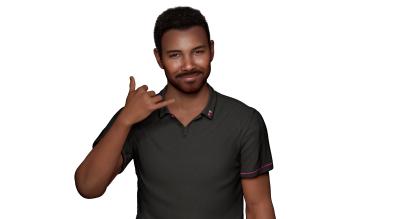-
Deutsche Telekom is using a digital human for customer service interactions
-
It’s a computer-generated-image (CGI) type of character that looks mostly real
-
DT’s digital human Max interacts with customers in real time
Most people who call customer service do so because they’ve got a problem they can’t solve on their own. Unless they’re over 90 years old, they’ve likely tried to solve their problem by going online, searching Google, reading FAQs, etc.
So when they call customer service, they're already at the end of their rope. They want to talk to a real person. They’re willing to repeatedly yell “representative” into the phone until they get what they came for.
Of course, companies don’t want them to talk to a real person because real people cost money. Their salaries can be quite expensive.
Now, Deutsche Telekom has found a compromise, which taps into this brave new world of artificial intelligence (AI) that humanity is stumbling into.
DT will let customers talk to Max, a digital human.
What the heck is a digital human you may be asking. Well, it’s a computer-generated-image (CGI) type of character that looks mostly real. And customers can talk to this character to get their problems solved.
Max was created for DT by UneeQ, a company based out of Auckland, New Zealand, which also has executive offices in Austin, Texas.
Simon Grieve, SVP of customer success with UneeQ, said that Max is a high-fidelity, human-like character.
“Max looks very real,” said Grieve. “He’s obviously CGI because we don’t want to trick people. But he’s very high quality. We really focus on being as human-like as possible but without feeling creeped out. (There’s a sample of a digital human in action on UneeQ’s website).

Although it’s not cool to trick people, it’s also important for customers to feel like they’re talking to someone who can help.
“A lot of the market research and use cases were high on fostering digital trust,” said Grieve. “The idea is to connect on an emotional level. The ability to show empathy is something we’ve based our whole business on.”
Examples of showing empathy would be smiling if the customer seems happy or soothing an angry customer by slowing down the cadence of an explanation. Max can also laugh, point toward something, give a thumbs up or thumbs down, among other gestures.
Max is part of DT’s mobile app My Magenta. But DT is also in the process of installing Max on its website. Customers can choose to talk to Max or a chat bot.
Max’s track record is pretty good. He solves 10% more customer problems than the chat bot.
“He doesn’t know any more than chat,” said Grieve. "But people stay talking to him longer.”
Max handles about 10,000 queries a month, with that number growing as it’s launched on DT’s website.
DT, which is the parent company of U.S.-based T-Mobile, is also planning more fictional characters that will be tailored to different regions and have diverse cultural backgrounds. Asked if T-Mobile would be using any of these, Grieve said, “I hope so.” He mentioned that the company has also done some innovation work with AT&T, Verizon and Singtel.
AI
UneeQ uses AI throughout its software to get Max to move and talk in a human-like way. AI is especially important for Max because he interacts with people in real time. His voice is a synthetic voice built on AI, and his ability to understand human voices is also built on AI.
Max’s knowledge base continuously improves as it gets trained on DT’s databases.
Would you rather talk to a digital human or a chat bot? Yeah, yeah, I know. You want to talk to a real person.
Luckily, Max can transfer you to an actual human being if he can't solve your problem.
